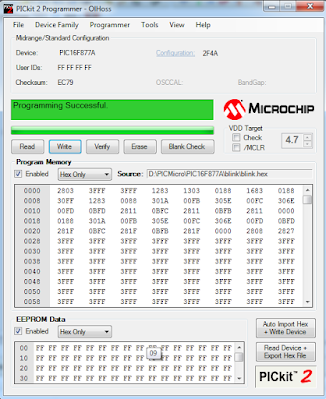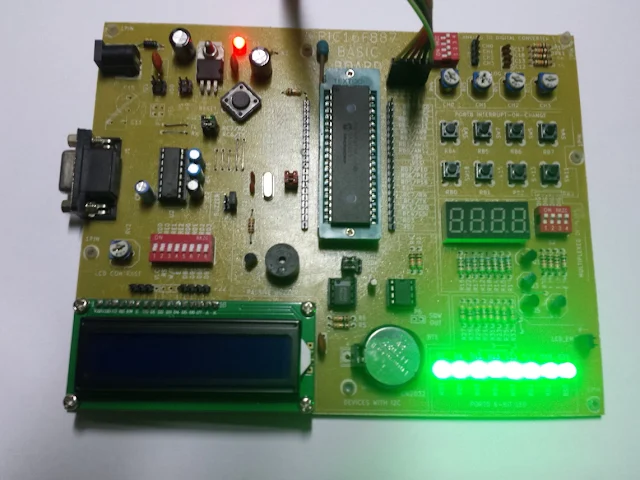Overview Of PIC16F877A
PIC16F877A is an old PICMicro device released in 2003. At the period that this device was very popular due to their large amount of I/O pins, a large memory, and a rich of peripherals to fit most of embedded applications. It was listed at the top of its mid-range 8-bit PICMicro.
However, there are many new released mid-range 8-bit devices. They have a lot of new features and more advantage over PIC16F877A. But the PIC16F877A is still in use in academic purposes and still useful in many typical electronic control projects.
 |
| A piece of PIC16F877A-I/P I used for prototyping |
 |
| A screen shot of the running program |
C Compilers For PICMicro
Many C compilers designed to target PIC devices. At the time I was at university, the popular C compiler are Hi-tech PICC, CCS PICC, and MikroC.
MikroC is not only support for PICMicro, but it's designed to fit many other architecture, ARM, AVR, and legacy 8051.But they are sold separately. The coding of C in this compiler remain almost the same in syntax and function libraries for all targeted architecture.
Simulation And Hardware Prototyping
Proteus is a simulating software based on SPICE. It has a lot of model and libraries for many analog, digital and microprocessor devices including PICMicro.
Using this software could save a lot of time of doing the prototyping project in real hardware, especially a breadboard prototyping. Additionally, it could cut down the devices burning due to any wrong connection or over voltage during the prototyping.
Getting Start With MikroC Pro For PIC
 |
| Circuit Diagram |
I have been using PICKit2 for device programming many years now. It still useful for any programming for most of the earlier version of PICMicro.
 |
| Using the PICKit2 to program the device |
I use my own development board to test this program.
 |
| Testing this program on the development board |
I make a video demonstrating how to get starting to use the compiler.
No comments:
Post a Comment